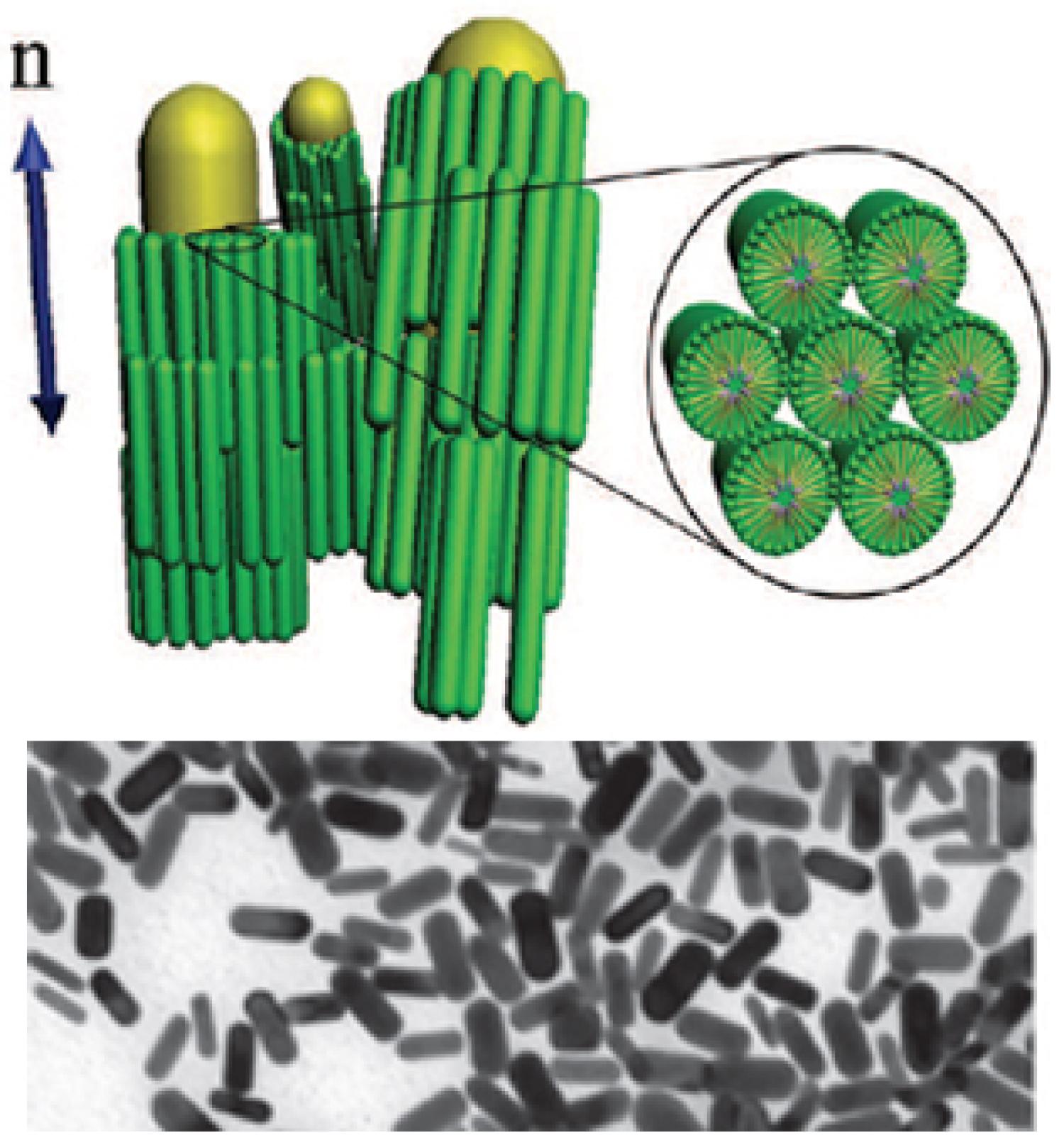Self-assembly of nano-sized functional units is an exceptionally promising way of designing inexpensive artificial composite materials with new macroscopic physical behavior and properties. The main objective of this project (funded by the DOE) is to explore self-organization of anisotropic nanoparticles into colloidal composites with tunable ordered structures. The research is focusing on understanding and control of self-assembly of metal and semiconductor nanoparticles, as well as on material behavior arising from their ordered self-organization and alignment. Fundamental studies of shape-dependent colloidal interactions and ordering of quantum dots and plasmonic metal nanoparticles will reveal underpinning physical mechanisms that guide mesoscale morphology and ultimately determine material properties of the self-assembled composites. These properties are characterized and correlated with hierarchical structures and composition. Control of the particle and molecular structural organization, along with the ensuing composite properties, is achieved by using intrinsic assembly and re-alignment into various mesomorphic phases, applying electric, magnetic, mechanical, and optical fields, as well as changing surface treatment at the nanostructured solid and liquid crystal interfaces. Analytical and numerical modeling of colloidal interactions and material properties will provide important insights at different stages of this project. This research may enable new, cheaper, and more efficient renewable energy technologies, a new breed of energy-efficient information displays and consumer devices, as well as a fertile ground for new basic science.

